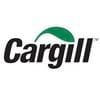Effects of Varying Dietary Energy and Protein Levels on Growth Performance of Pre-Starter Broiler Chicks
This study was aimed at assessing and ascertaining the energy and protein levels needed by broilers reared in the southern rainforest of Nigeria for its optimal performance. Two hundred and eightyeight (288) day old broiler chicks of Abor Acre strain were used for the experiment. These birds were allocated to sixteen treatment groups of eighteen birds each with three replicate of six birds each. The experiment lasted for three weeks at the pre-starter phase. Sixteen (16) diets were formulated comprising of four (4) Metabolizable Energy(ME) levels (2800, 3000, 3200 and 3400kcalME/kgDM) and four (4) protein levels (18, 20, 22 and 24%CP). The data obtained from the research was subjected to descriptive statistics and Analysis of Variance (ANOVA) in a Completely Randomized Design (CRD) of 4x4 factorial arrangement and the means were separated using the Duncan Multiple Range Test (DMRT) of GENSTAT (2005). The result obtained showed that daily feed intake reduced with an increasing dietary energy level. The daily body weight gain increased with an increasing crude protein level and dietary energy level. Feed conversion ratio (FCR) reduced with an increasing crude protein level along with dietary energy level. Daily protein intake increased with an increasing crude protein level while dietary energy intake level increased with an increasing energy level. Protein and energy levels had highly significant (p<0.05) effect on body weight gain. Chicks fed diet with 3400kcalME/kgDM and 22%CP (treatment 15) had the least feed conversion ratio and the least cost of feed intake per kg body weight gain and is more economical.
Keywords: Energy, Crude protein, Growth performance, Feed Intake, Body Weight Gain
INTRODUCTION
Materials and Methods

Result and Discussion


CONCLUSION
Akinmutimi, A, Daniel, O .Onabanjo, R (2018) Determination of Crude Protein Requirement of Broiler Chickens Placed on Straight/Single Diet. Journal of Animal Science, Volume 96, Issue suppl_3, Page 291.
Carre’, (2014). Progress in Broiler selection: Benefits, limitations, as assessed by the digestive function and consequences on dietary lysine concentration IUth European poultry conference, stavenge, Norway. Pg. 189 – 209 – (improve feed efficiency)
Classen, H. L. (2013). Response of broiler chickens to dietary energy and its relationship to amino acid nutrition. Australian Poultry Science Symposium pp. 107 – 118.
FAO (2018).Sources of the world`s meat.Food and agricultural organisation of the united nation. www.fao.org/faostaat/en/#data/QA.
Flitsch, S. L., Ulijn, R. V. (2003). "Sugars tied to the spot". Nature. 421 (6920): 219–20.
Genstat (2005) Genstat for windows. Genstart Release 8. 1, 8th Edition. Lawes Agricultural Thrust. (Rothmasted Experimental Station) VSN International ltd www.vsn.intl.com
Gleaves, E. W., (1991). Domestic Poultry Feed Formulation Guide. Historical Materials from University of Nebraska, Lincoln Extension. 4841. EC91-269.
Leeson S. (2012). Future considerations in poultry nutrition. Poultry science 91. Pp. 1281 – 1285
Leeson, S. and Summers, J. D. (2005). Commercial poultry nutrition. 3rd Ed. Publ. University Books, Guelph, Ontario, Canada.Accessed on May 15th, 2020
National Research Council (1981). Effect of Environment on Nutrient Requirements of Domestic Animals. Washington, D.C. National Academy Press. 9th Edition, NAS pp:155.
National Research Council (1994). Nutrient Requirement of Poultry.9th Edition, National Academic Press, Washington, DC, USA. Pg 3-33.
Olomu, J. M. (1995). Monogastric Animal Nutrition, Principle and Practice. A Jachem Publication. 13:459 – 470.














